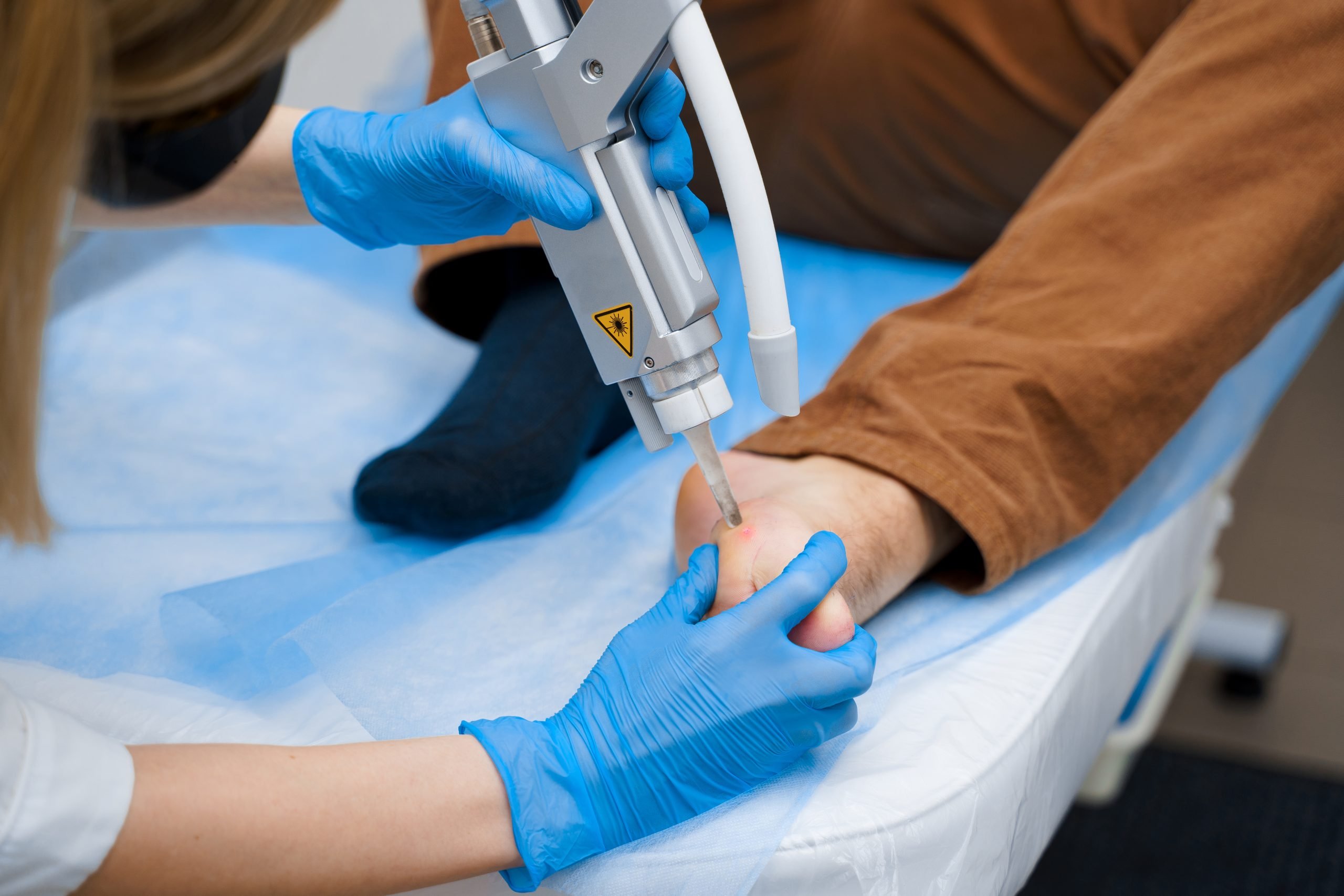What Causes Warts & How to Get Rid of Them


Warts – they are unsightly and sometimes painful little bumps that seem to persist indefinitely. Luckily, there are many options available to patients who have a persistent wart problem. If you struggle with recurring warts, it might be time to talk to your primary care provider about your wart removal options.
What Causes Warts?
All warts are caused by the human papillomavirus (HPV), and there are more than a hundred strains of this virus that can cause warts and other issues. Warts usually begin when an open wound or damaged tissue is exposed to the virus. Certain HPV strains are responsible for some forms of cervical and anal cancer, but these are generally different than the strains that cause regular skin warts.
Types of Warts
The different types of warts are broken up and categorized based upon where they grow on the body. For example, common warts are usually found on the fingers and the back of the hand, while plantar warts are generally found on the feet. If plantar warts grow in clumps or clusters, they are considered mosaic plantar warts. Flat warts can be found anywhere but are more common on children’s faces and women’s legs.
Another type of wart is the filiform wart; this wart type is almost fibrous-looking, having little strands of flesh growing from the base of the wart. Periungual warts, on the other hand, grow around the fingernails and toenails – these warts are often incredibly painful if they are ignored long enough to push on the nailbed.
How to Get Rid of Warts
The majority of wart treatments and removals involve killing the infected skin; unfortunately, warts usually have their own blood source, so complete removal can be painful and bloody. If you don’t think you’ll be able to handle this yourself, it is advisable to have a professional help you.
OTC Treatments
Common wart removal liquids contain a strong acid that will kill the skin and, hopefully, the viral infection underneath it. Some brands also sell at-home freeze kits; the efficacy of these is hit or miss, because they don’t get nearly as cold as what would be used in the doctor’s office. Many doctors will request that you try these methods first. Whichever you try, be sure to follow the instructions closely.
The Duct Tape Method
It’s unclear exactly why this method works (for some people, it doesn’t), but classic duct tape can be used to remove warts. It’s likely that starving the diseased skin of oxygen, combined with the chemicals that are in the adhesive, causes the wart to die and fall off. The science behind this treatment isn’t solid, however it is entirely safe to try, and if effective, you may spare yourself an office visit and procedure.
Home Remedies
There are some pretty decent home remedies that can help you get rid of less stubborn warts. Apple cider vinegar, tea tree oil, garlic, aloe, onion extract, and other common household items can be effective in reducing some warts and limiting their spread to other areas. In our opinion, it can’t hurt to try at-home remedies, but don’t be afraid to defer to the professionals if you don’t see results.
Cryotherapy
When all else fails, or you’re simply tired of trying different at-home treatments, it might be time to let the professionals handle your wart problem. Doctors’ offices use a freezing treatment called cryotherapy to kill and remove warts. Your doctor will usually apply a very cold wand to your wart for several seconds; then, you will leave the wart covered for a few days. Usually, warts will fall off after one or two cryotherapy treatments.
Wart Removal in Orlando
Here at Optimum Direct Care, standard, run-of-the-mill wart removal treatments are included in your yearly membership! There’s no reason for you to sit at home applying and reapplying salicylic acid wart remover; come into our office, and we’ll freeze it right off for you. Contact our office to schedule your cryotherapy visit today.
